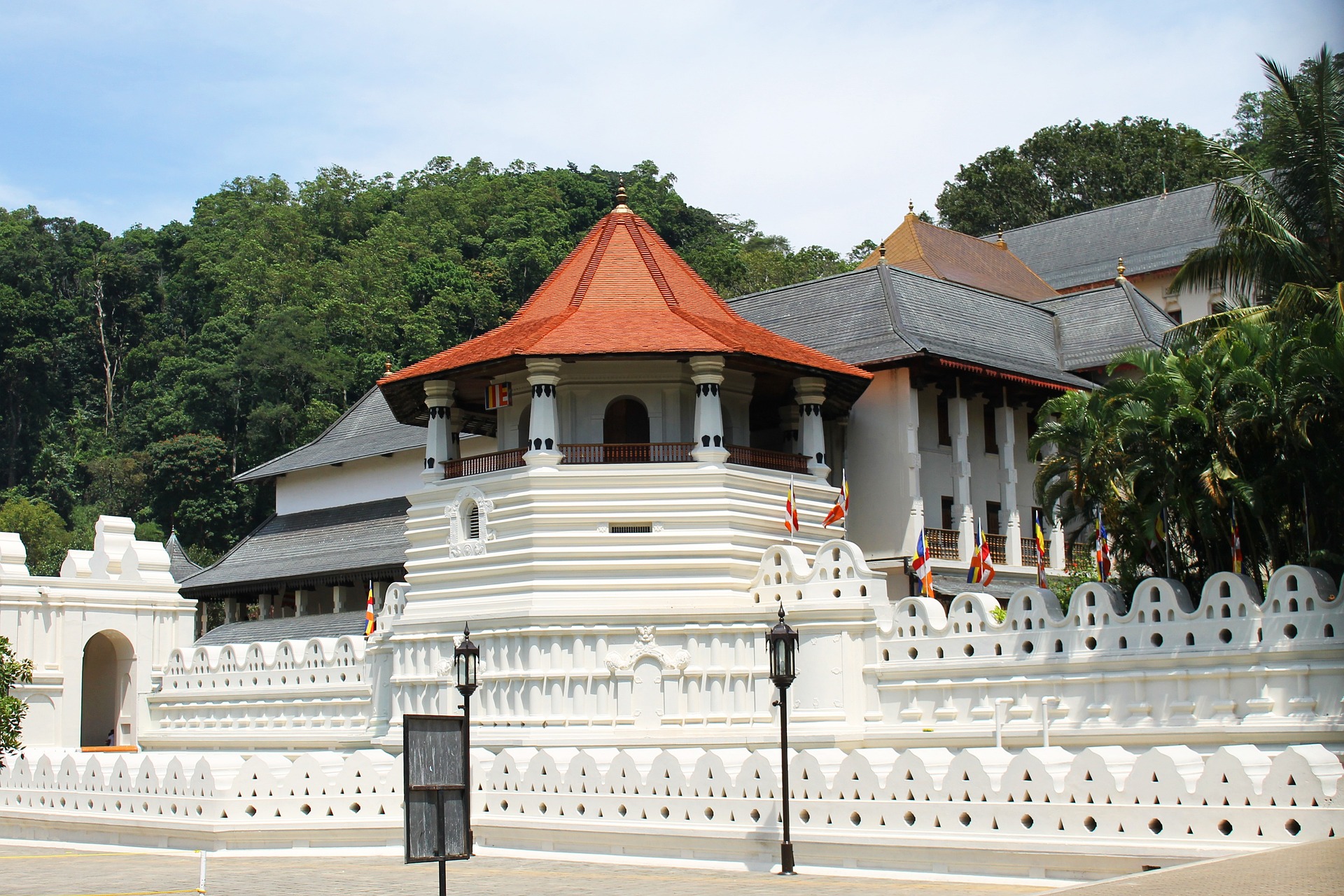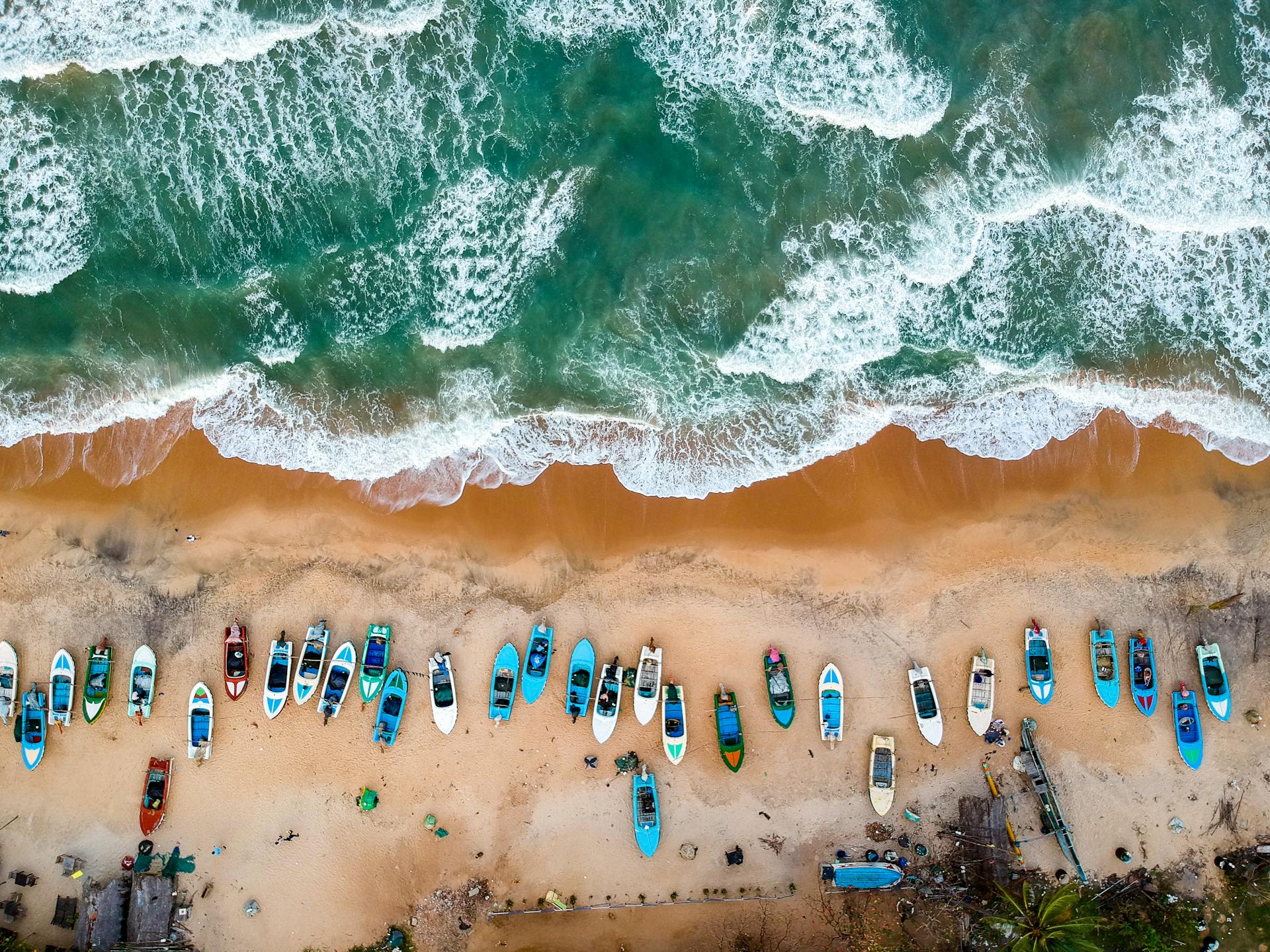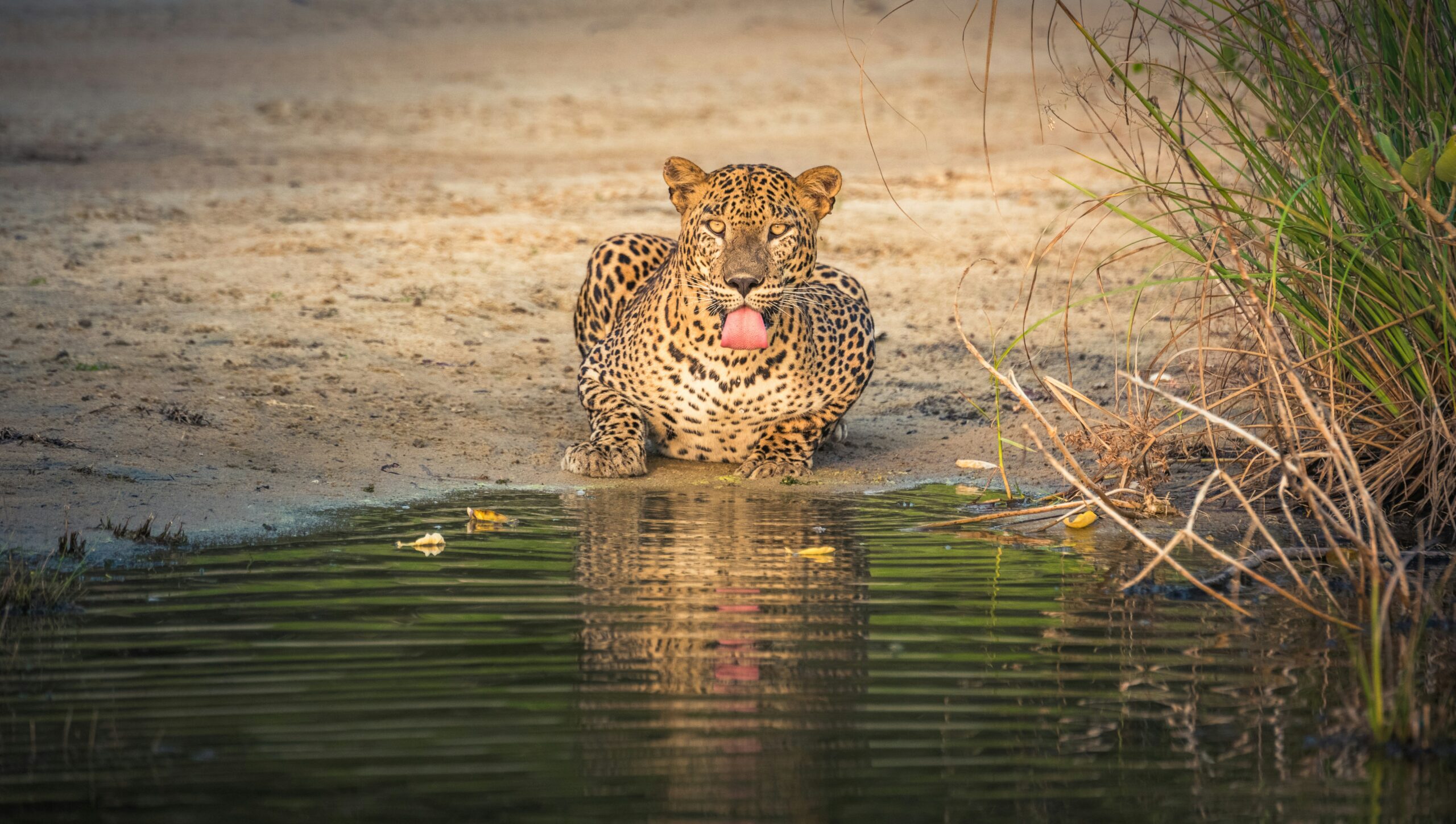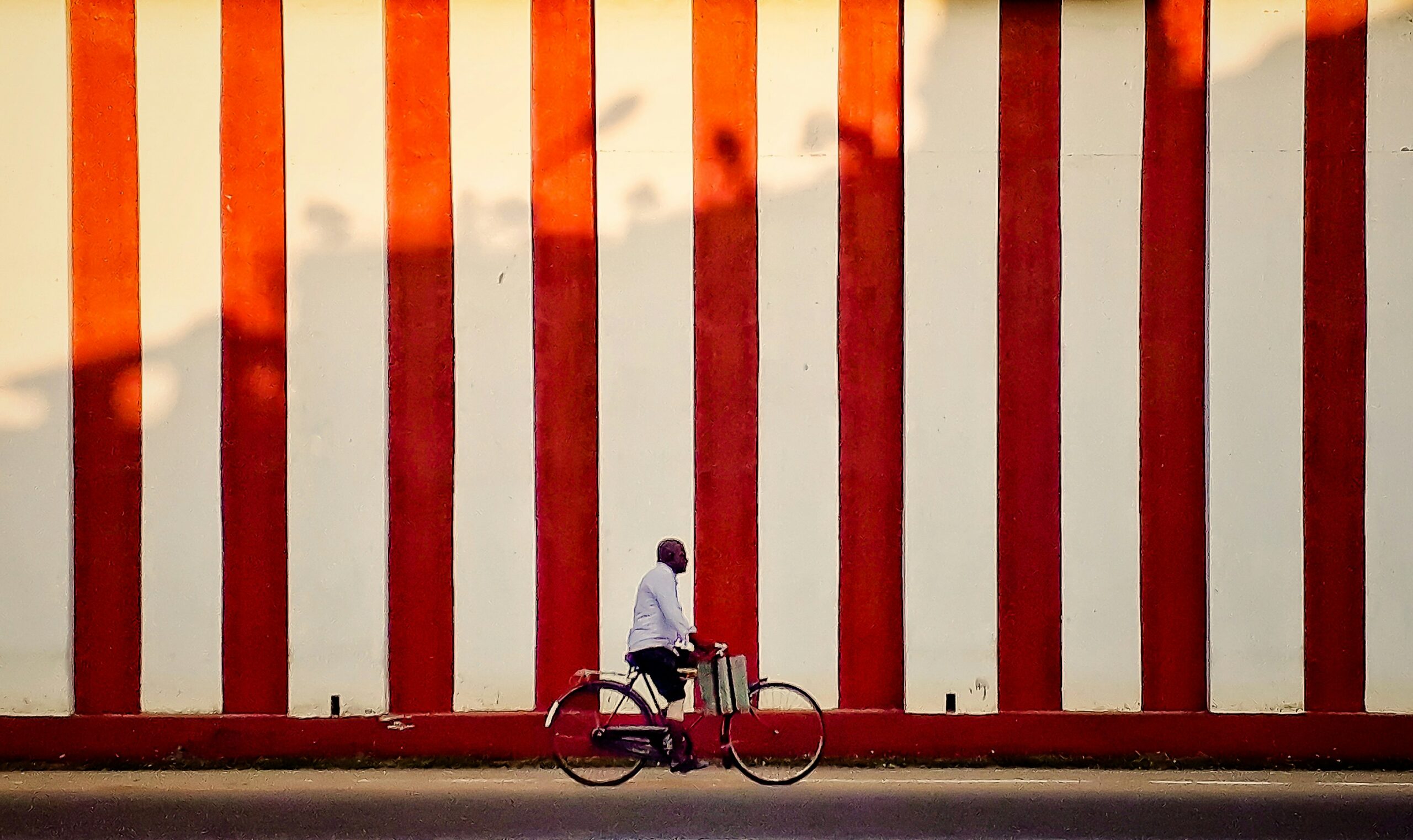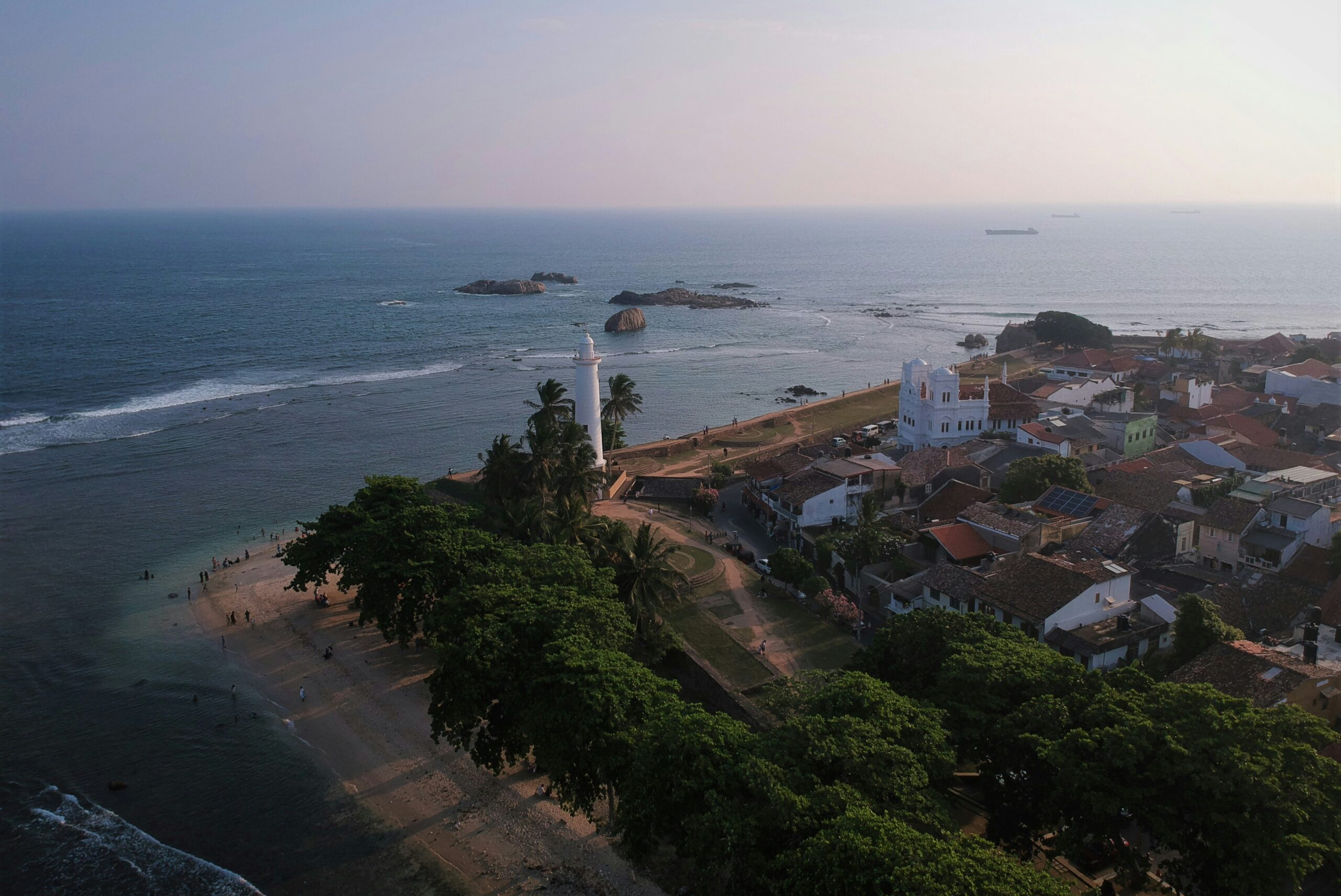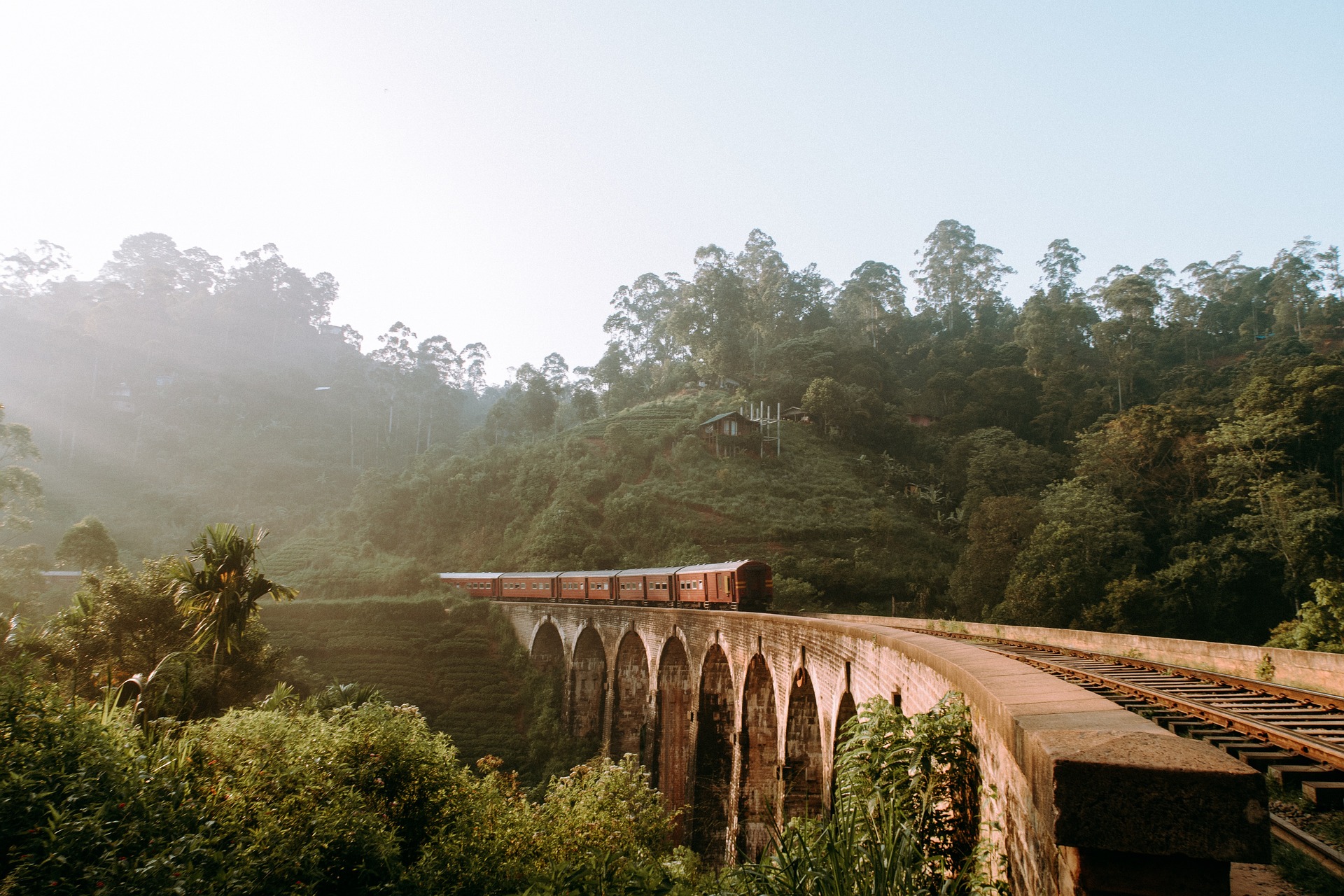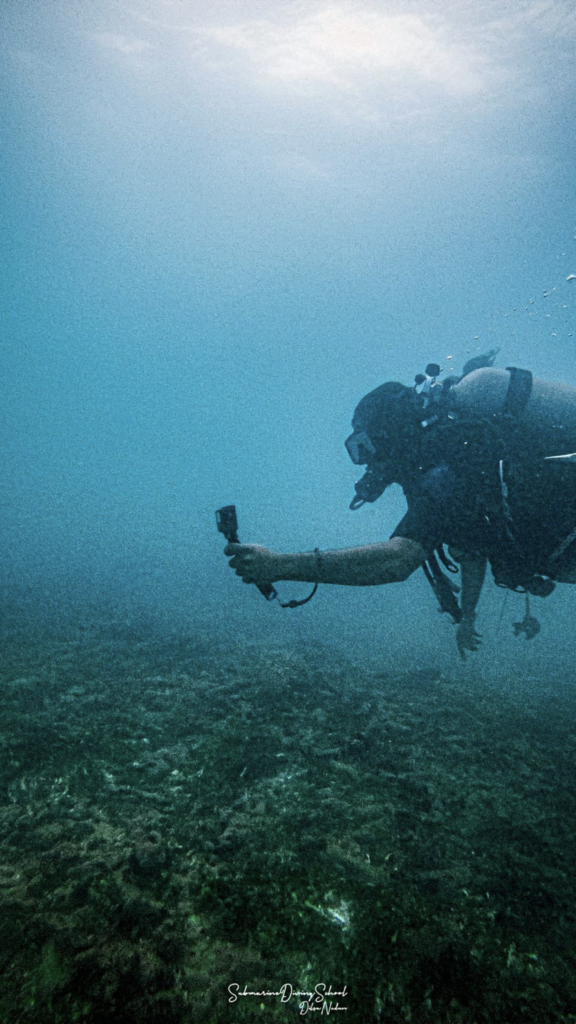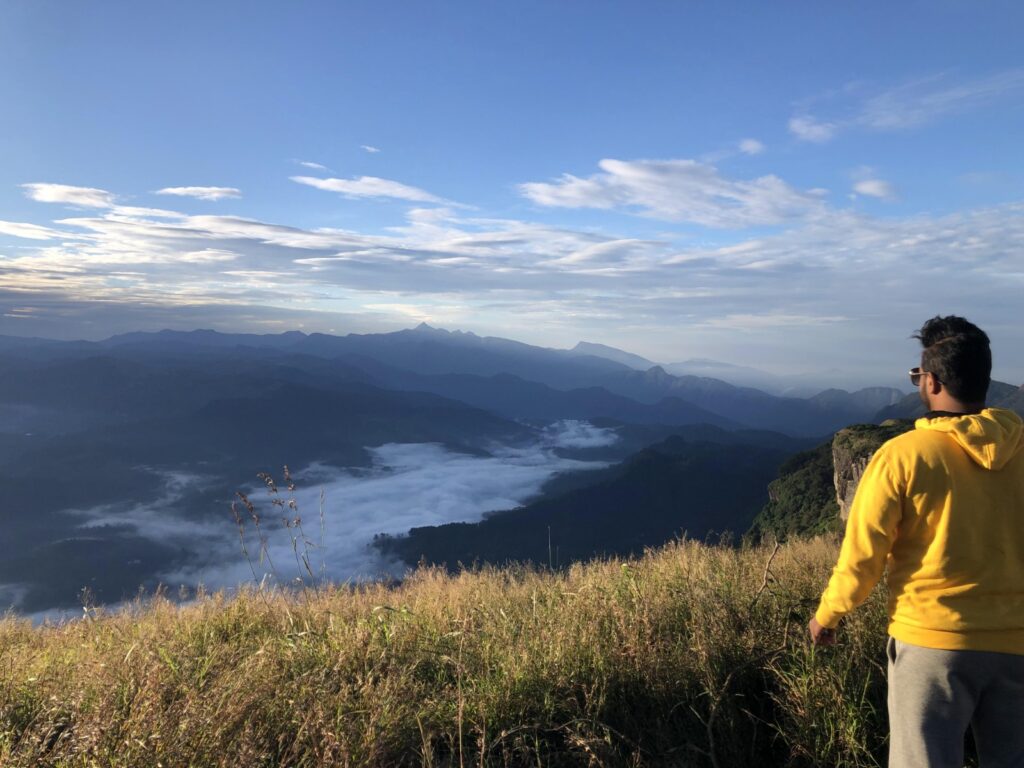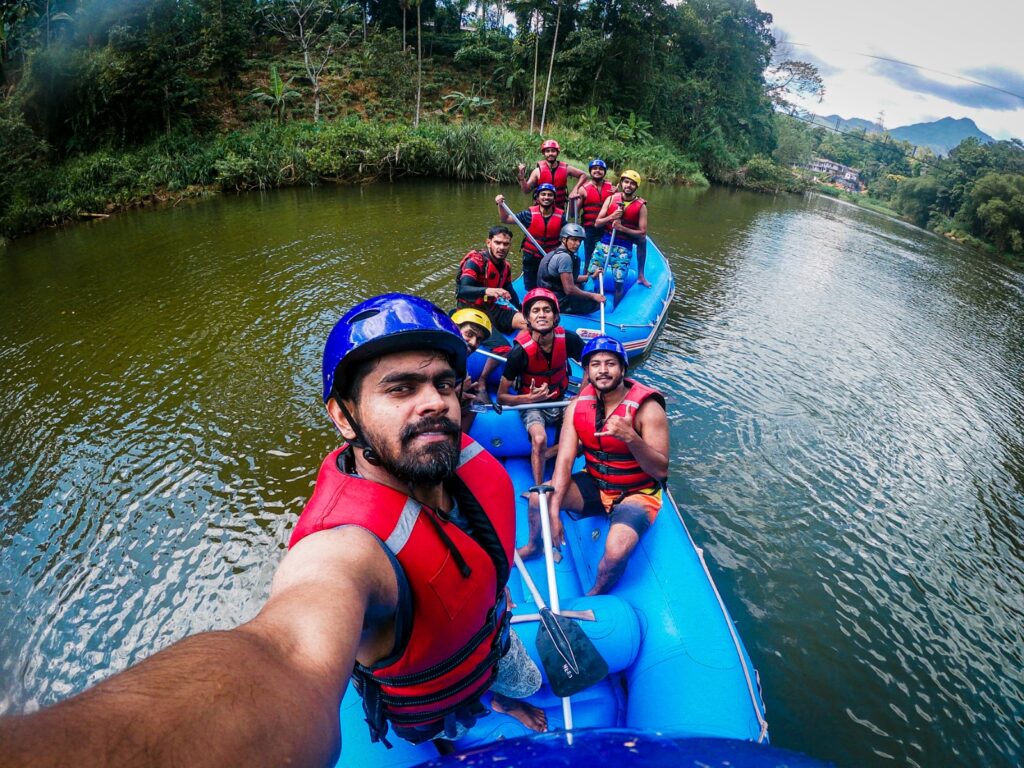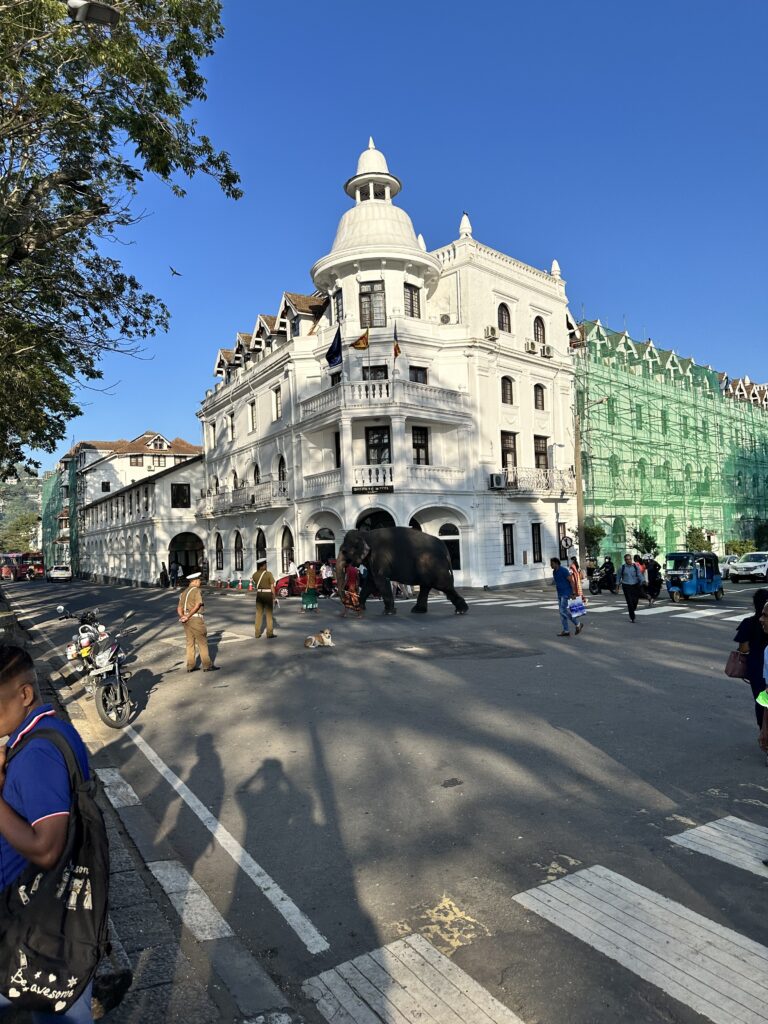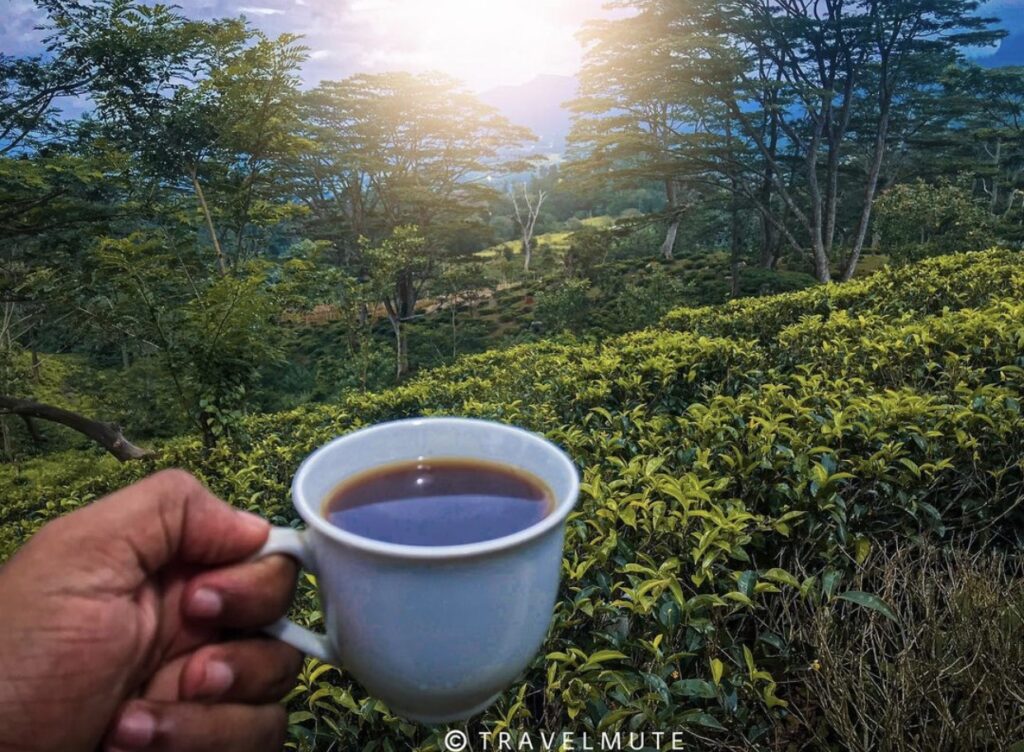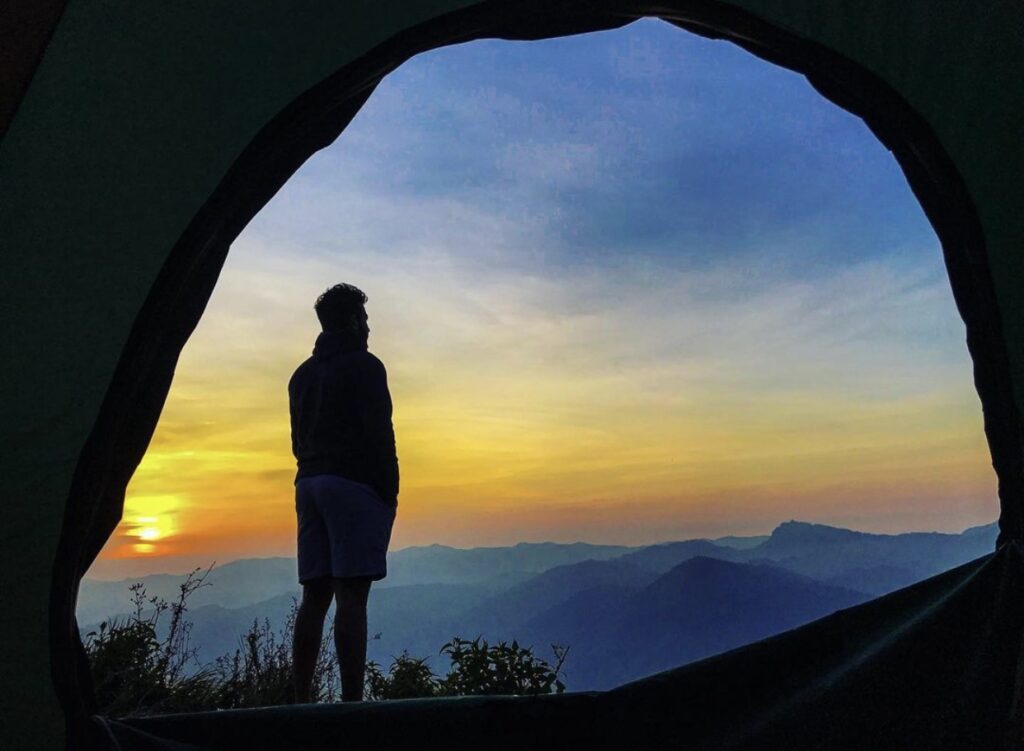Kandy’s History and Significance
Kandy (once called Senkadagalapura) was the last stronghold of the Sinhala kings and a seat of learning and Buddhist culture for over 2,500 years whc.unesco.org. The city is surrounded by emerald hills and the Mahaweli River, giving it a fortress-like setting. Its strategic location helped Kandy resist colonial forces until 1815. Today, Kandy’s Sacred City – the old royal palace complex and surrounding temples – is a UNESCO World Heritage site. The heritage listing notes that Kandy “was the last capital of the Sinhala kings” and contains the famous Temple of the Buddha’s Tooth, a major pilgrimage site whc.unesco.org. Modern Kandy still pulsates with traditional festivals, dances (Kandyan dance), Buddhist education, and the smoke of ritual lamps.
Temple of the Sacred Tooth (Sri Dalada Maligawa)
The Temple of the Sacred Tooth Relic (Sri Dalada Maligawa) in Kandy is an ornately decorated Buddhist shrine built into the old royal palace complex. It enshrines a canine tooth of Buddha, making it one of Sri Lanka’s holiest sites. (Photo: YB Photography, CC BY-SA 4.0).
At the heart of Kandy lies the Temple of the Tooth Relic (Sri Dalada Maligawa). This richly ornamented white temple was founded in 1595 by King Vimaladharmasuriya I, who moved the relic here for safekeeping. The relic itself – a single tooth from Gautama Buddha – has extraordinary significance in Sri Lankan history. By legend and custom, “whoever holds the relic holds the governance of the country” en.wikipedia.org. For centuries the tooth was kept by successive Sinhalese monarchs as a symbol of divine kingship, and today Buddhists and locals still attribute immense spiritual power to it. The World Heritage listing calls the temple “sacred” and highlights it as a “famous pilgrimage site” whc.unesco.org.
Inside the temple, the relic is housed in a series of nested golden caskets within a special inner chamber. Daily rituals are performed by monks of the Malwathu and Asgiri chapters. Worship ceremonies occur at dawn, noon and evening, each involving chanting and offerings en.wikipedia.org. Every Wednesday a sacred ablution ceremony (Nanumura Mangallaya) is held: the tooth is bathed in scented water and herbal paste, believed to confer blessings on participants en.wikipedia.org. Devotees often queue for hours to enter the inner sanctum on these special days. In April 2025, one public relic exposition drew roughly 450,000 devotees in a single day en.wikipedia.org – a reminder of the temple’s enduring draw. This popularity also means the site can be very crowded during festivals or commemorations.
Legend of the Tooth Relic
According to historical chronicles, the Buddha’s tooth survived his cremation and was eventually smuggled to Sri Lanka in the 4th century CE. Princess Hemamali and her husband Prince Dantha carried the relic hidden in her hair, fleeing from the kingdoms of India en.wikipedia.org. They landed at Lankapattana (on Sri Lanka’s southwest coast) and passed the relic to King Sirimeghavanna of Anuradhapura en.wikipedia.org. From then on, guardianship of the tooth became inseparable from the island’s sovereignty. As kingdoms moved (to Polonnaruwa, Dambadeniya, Gampola, Kotte, and finally Kandy), the relic went with them. Today’s temple is the culmination of this journey: its octagonal tower (paththirippuwa) and moat date to the late 18th century kings, preserving that royal legacy en.wikipedia.org.
The Esala Perahera Festival
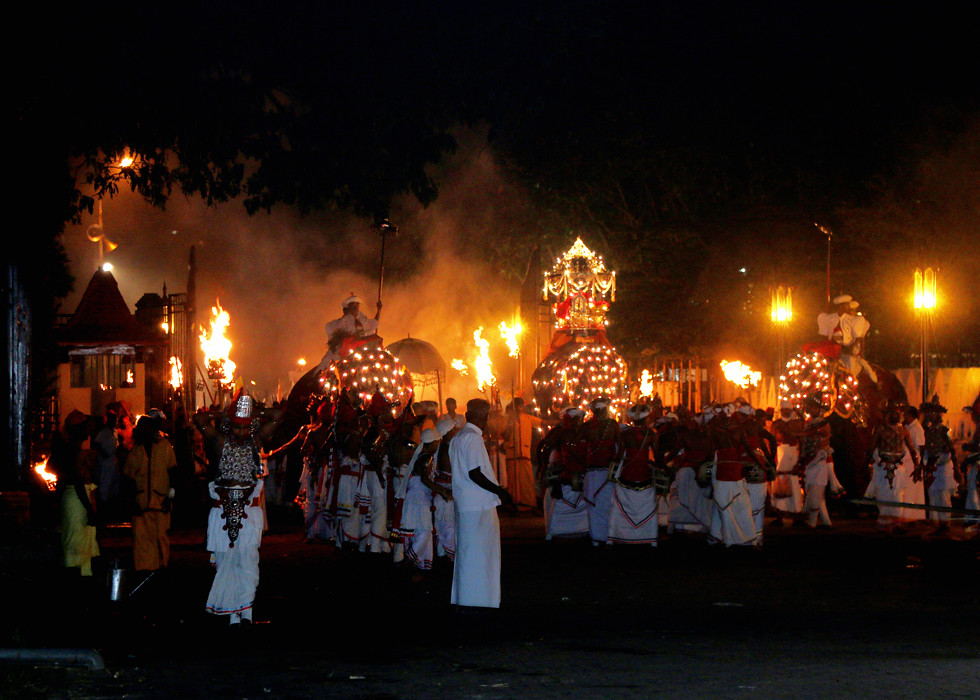
A highlight of Kandy’s year is the Esala Perahera (Festival of the Tooth), a grand ten-night procession held each July–August. Here, richly adorned elephants carry illuminated shrines and a golden casket (at top center) symbolizing the Sacred Tooth Relic, while drummers, dancers, and fire-walkers participate in the parade.
The Esala Perahera (also called Dalada Perahera) is Kandy’s most spectacular festival. Held in late July or early August (during the Esala month of the Buddhist calendar), it traces back over a thousand years as a tribute to the Sacred Tooth Relic and a ritual for blessings. The pageant blends Hindu and Buddhist tradition: it venerates the Buddha’s relic and four guardian deities (Natha, Vishnu, Kataragama, and Pattini) in hopes of rain, prosperity and protection. The festival’s roots combine an ancient pre-Buddhist Esala procession (to honor rain gods) with the Dalada procession (honoring the tooth). By the reign of Kandy’s King Rajasinghe II (18th century), the relic’s custodian had begun parading it publicly during Esala so the people could venerate it. After the British took Kandy in 1815, the Buddhist clergy took over festival duties and the Perahera continued as a lay tradition. Today it draws thousands of Sri Lankans and international visitors each year.
Festival Highlights
Each night of the Esala Perahera features a long procession winding through Kandy’s streets. The parade is announced with the sharp crack of traditional whips. Then come torchbearers and men carrying kavadi (colorful archways of peacock feathers), leading the way. Next march elegant Kandyan dancers in elaborate costumes (and often masked “devil” dancers to scare away evil). Rhythmic drummers (geta bera, yak bera, etc.) strike a hypnotic beat that echoes in the night.
The most eye-catching participants are the tuskers – temple elephants covered in ornate cloth and jewel-like ornaments. On the final five nights (“Randoli Perahera”), a lead elephant carries a golden casket on its back, which stands in for the actual tooth relic. This sparkling casket is the procession’s centerpiece: devotees kneel or bow in reverence as it passes. Alongside the elephants and dancers are fire-breathers and jugglers, who whirl burning torches and perform daring feats to add excitement. The air is fragrant with incense and jasmine, and the sight of dozens of lamp-lit elephants winding around Kandy Lake is unforgettable. On the final night, after the grand parade, priests perform the Diya Kepeema water-cutting ceremony at dawn (on the Mahaweli River) to conclude the festival.
In summary, “you’ll inhale… incenses… gasp in awe as fire-eaters swing burning husks…and men crack whips to scare away demons only inches from people’s faces,” as one writer vividly described this immersive event. It is both a playful and sacred celebration – the city streets transform into a multi-sensory offering to the Tooth Relic and to Buddha.
Viewing the Perahera – When & Where
| Procession & Night | Date (2025) | Best Viewing Spots | Accommodation Tip |
|---|---|---|---|
| Kumbal Perahera(Nights 1–5) | July 30 – Aug 3, 7:00 PM | Route from Natha & Vishnu Devale shrines toward the temple. Good views along Dalada Veediya (Temple Street): e.g. outside Queens Hotel or Java Lounge. | Stay near Kandy Lake or city center – e.g. Queen’s Hotel or Heritage Boutique – for easy access. |
| Randoli Perahera(Nights 6–9) | Aug 4 – Aug 7, 7:00 PM | Along Dalada Veediya and the final approach to the Temple. Queens Hotel balcony and street corners near Temple provide prime views. | Central hotels (Queens Hotel, The Radh) put you in the heart of the action. Book early due to crowds. |
| Grand Randoli(Final, Night 10) | Aug 8, 6:50 PM | In front of the Temple (stands near St. Paul’s Street) or busy junctions like Hotel Casamara on Kotugodella Veediya. Paid viewing galleries near Queens Hotel give clear panoramic views. | Nearby hillside hotels (W15 Hanthana, Elephant Stables) are peaceful retreats after the late-night finale. |
| Dahawal (Day) Perahera | Aug 9, 2:15 PM (following day) | Morning procession starts at 10 AM near Temple. Good spots are along Temple frontage before it heads out. | Daytime events are quieter; stay central or lakeside to rest after early morning crowds. |
Notes: Exact times and dates vary each year. The 2025 schedule (shown above) was sourced from the official Perahera website. Viewers should arrive at least an hour early on popular nights to secure a good spot. Many people watch from along Dalada Veediya (Temple Street) or rent seats in cafés (e.g. Java Lounge) near the parade. Others buy tickets for pavilion seating near the Temple facade for unobstructed views.
Travel Tips: Getting to Kandy and Visiting
How to Get to Kandy
Kandy is well-connected to the rest of Sri Lanka despite its mountain setting. By air: The closest international airport is Bandaranaike International Airport (Colombo), about 115 km (~3–4 hours’ drive) from Kandy. From Colombo, many visitors take the scenic train up through tea country – the famous Colombo-Kandy train ride snakes through lush hills and estates. The railway station is in central Kandy, making it convenient. By road: Kandy is on the main A1 highway from Colombo. Buses leave hourly from Colombo to Kandy (journey ~4 hours), or you can hire a private car/van. The winding drive through the mountains is pleasant, though landslides in monsoon rains can occasionally delay travel.
Best Time to Visit Kandy
Weather: Kandy’s elevation gives it milder climate than coastal areas. The dry season December–April is generally the most comfortable time for outdoor touring. Mid-year (May–September) brings the Yala monsoon rains (frequent showers, though forests are green), and the Maha monsoon (Oct–Dec) has the heaviest rain. If you wish to avoid rain entirely, plan December–March.
Festival Season: However, if your trip is focused on the Perahera festival, you must visit in July/August. This is peak season: Kandy comes alive with nightly processions. The weather is slightly wetter then, but the spectacle is unmatched. Outside Perahera season, Kandy is much quieter.
Crowds: Expect large crowds around the temple and streets during temple offerings (especially Wednesdays) and festival nights. Hotels book up fast in July–August; make reservations months in advance if traveling then.
Accommodation Options
Kandy offers a range of lodging from guesthouses to boutique resorts. City Center (Town & Lake): Staying near Kandy Lake or the Temple area puts you within walking distance of the main attractions. For example, Queen’s Hotel (a colonial landmark) and Heritage Boutique are popular choices near the temple. These are lively areas with markets and restaurants. Hillside Retreats: The hills overlooking Kandy are quiet and scenic. Hotels like W15 Hanthana Estate and Helga’s Folly (famous for its quirky design) sit a short tuk-tuk ride above town. A hillside stay gives cool breezes and valley views. Lake-area Hotels: The shores of Kandy Lake have charming smaller hotels and guesthouses. For instance, Ru Boutique Hotel is a calm lakeside option. These combine tranquil surroundings with easy access to the old city. No matter where you stay, it’s customary to remove shoes when entering hotels and temples alike.
Cultural Etiquette and Tips
Visiting Kandy’s sacred sites comes with expected Buddhist etiquette. Dress modestly: both men and women should cover shoulders and knees when entering temples. (Large sarongs and shawls are often available to borrow or rent at temple entrances.) Always remove your shoes and hats before entering a shrine. When inside the Temple of the Tooth or any temple, speak softly and avoid touching Buddha statues. It’s considered rude to point your feet toward a Buddha image or to turn your back on it. Photography is allowed around the exterior but prohibited in the inner sanctum where the relic resides.
When interacting with locals, greet with a smile or the traditional “Ayubowan” (meaning “may you live long”). Always use your right hand for handshakes, giving/receiving items and eating, as the left hand is considered less clean. Bargaining is common in markets, so negotiate prices calmly. Sri Lankans are generally very hospitable – showing respect for elders and customs (for example, nodding slightly or addressing older people as “Sir/Madam”) goes a long way to goodwill.
Serendip Trails: Local Cultural Tours
For travelers seeking insider access, consider Serendip Trails, a Sri Lankan tour operator specializing in cultural experiences. Their tagline is “Discover Sri Lanka Like Never Before”, and they emphasize crafting “your perfect journey” through the country’s history, nature and festivals serendiptrails.com. Serendip Trails offers guided itineraries covering Kandy’s highlights – from the Temple of the Tooth and Perahera streets to hidden gems like Udawattakele Forest and village temples. A local guide can help you understand ritual contexts, navigate festival routes safely, and even arrange special visits (such as backstage passes to cultural performances). For example, a Serendip Trails Kandy tour might include sunrise Puja at the Temple, a private meditation session, and a night watching the Perahera from a reserved pavilion. Incorporating Serendip Trails or a similar local operator into your plans can add depth: you’ll learn not just what to see in Kandy, but the meaning behind its monuments, dances and ceremonies serendiptrails.com.
